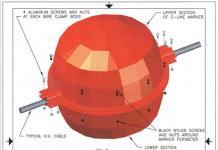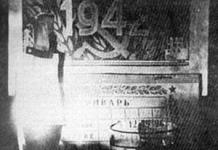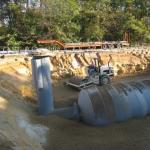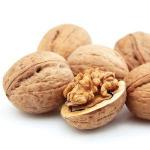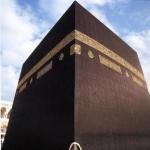Using glass objects every day, almost no one thinks about what this material is obtained from. How are sometimes amazingly beautiful interior items made? How is glass made? Why does sunlight penetrate freely through a window into a room? How do certain types of glass avoid breaking even when subjected to strong impacts?
Production technology
The main material for glass production is quartz sand. Yes, the same one that is strewn with sandy beaches and on which you can happily walk barefoot in the summer.
Glass production begins with the precise amount of tiny quartz measured on an electronic scale being heated to a temperature of over 1500 degrees C. The grains of sand melt, forming a homogeneous mass. Soda ash and limestone are added to them in small quantities. For what purpose?
Soda ash acts as a catalyst in this process and causes the sand to melt at a lower temperature, approximately 850 degrees C. This reduces energy costs for production. But soda is not used without limestone. This fact is explained simply: molten sand and soda ash, when solidified, form a substance that easily dissolves in water (not the best material for the production of household items). Magnesium and aluminum oxides and boric acid are also added here. As well as a number of substances that prevent the formation of air bubbles in the mass.
After all the components are brought to a certain temperature, sharp cooling follows - this will prevent the grains of sand from returning to their original form.
glass rainbow
Crushed quartz (sand) in its natural form contains a small admixture of iron, which gives finished products in the future a light green tint. To make the material transparent, selenium is added to it. This substance gives off reddish tones, but when mixed with iron, the glass surface turns out colorless. And what is glass made from in different shades, and sometimes not even one color, shimmering with all the colors of the rainbow?

To give the material color, metal oxides are added to the heated mixture. Cobalt will give rich blue colors. The product will sparkle with purple shades if manganese is added during the manufacturing process, and green will come from a mixture of chromium and iron. For sunny yellow color, chromium oxide is suitable, for emerald green - chromium and copper oxides. Which components are added depends on the purpose of the glass plant.
The secret of strength
The next process after coloring is crystallization of the mixture. It is otherwise called the homogenizing process. As a result, all air bubbles, streaks and other inconsistencies that may further affect the quality of the products are removed.
After homogenization, the future glass is delivered to a tank with molten tin at a temperature of about 1000 degrees C. Since tin has a higher density, the liquid glass mass is on its surface. Where it becomes perfectly smooth, it cools a little, acquiring hardness. At the next stage, the mass, cooled in the tank to 600 degrees C, is transferred to a roller conveyor. Here, based on the rules of how glass is made with a high level of quality, it is kept until the temperature drops to 250 degrees C. The duration of the process is explained by the need for uniform gradual cooling, in order to avoid premature cracks.
Unique waste-free production

At the end of the conveyor, a device is installed that controls the quality of the finished material, and if there is the slightest flaw, the glass is sent for remelting with a new prepared mixture. After passing quality control, the finished sheets are cut into the required format and sent either to the warehouse or for further processing. It all depends on the purpose of the product.
The remains after cutting are put back into the mixture for remelting. All rejected material is sent there. Based on how glass is made, we can say with confidence that this production is waste-free.
Kinds
Due to its chemical and physical properties, glass is divided according to several criteria:
- by purpose (domestic needs, industrial use, construction);
- by type of processing (chemical, mechanical and special technologies);
- by surface texture (matte, glossy, coated with various metals, with or without film coating).

There is no clear division into categories. The classification is based on the technology used and how the glass is made. The end result may be a multi-layer surface with machined edges or a product with a high level of light transmission, cold cut. It is worth noting that a separate quality parameter is the level of light transmission. There is no glass with a 100% level; for domestic needs it is 82%. In high-tech products: microscopes, telescopes, various lenses and precision instruments - this figure is above 90%.
The basis of glass is one of the most common materials: quartz sand. It is subjected to special treatment, heated to critical temperatures. In this case, individual sand particles are fused together. This is then followed by rapid cooling of the resulting mass, during which the grains of sand simply do not have time to return to their original state.
The glass manufacturing process consists of several stages:
1. Sand is melted to a liquid state in a special furnace. Quartz sand melts at a temperature of 2300 degrees Celsius. The addition of sodium carbonate (soda) reduces the temperature required for glass formation to 1500 degrees Celsius. However, baking soda causes water to corrode glass. Therefore, in order to neutralize this phenomenon, calcium oxide (lime) is additionally introduced into the glass.
2. Depending on the purpose of the glass, other chemicals are added to this mixture. The most common additive for decorative glass is lead oxide, which provides shine as well as low hardness making it easier to cut. To make glass more resistant, magnesium or aluminum oxides are added to it.
3. To give the glass the desired shade, oxides of various metals are added to the molten mass. For example, with the help of iron oxide it is made red, nickel oxide - purple or brown, uranium oxide - yellow. Copper or chrome give it different shades of green.
4. Gas bubbles are removed from the molten mass of sand, soda, lime and other components. This involves stirring the glass until it is evenly thick and adding substances such as sodium sulfate or chloride, antimony oxide.
5. The molten glass is shaped. This can be done in one of the following ways:
- The glass is poured into a bath of molten tin as a substrate and blown with compressed nitrogen to form and polish it. This is how sheet glass has been made since the 1950s.
- The molten mass is poured into the mold and the glass is allowed to cool. This method was used by the Egyptians and is how most optical lenses are created.
- The glass is collected at the end of a hollow tube and then blown by rotating the tube. Glass is shaped by the air blown through it, the force of gravity acting on the glass melt, and whatever tools the glassblower uses. This is how vases, glasses, Christmas tree decorations and other three-dimensional objects are made.
6. The glass is allowed to cool, after which it is again subjected to heat treatment. This is done to make the glass more durable. This process is called annealing, and it removes all point sources of stress that can form during the cooling process of the glass.
7. At the final stage, various coatings are applied to the glass, laminated or processed in some other way to increase strength and durability. Sheet glass is cut into standard sheets.
 If you're wondering where glass comes from, go to the beach. Almost all glass is made from sand, which is actually ground quartz.
If you're wondering where glass comes from, go to the beach. Almost all glass is made from sand, which is actually ground quartz.
The sand contains a small amount of iron. It is iron that gives glass made from ordinary sand its greenish color. Glass wool uses selenium to produce absolutely colorless transparent glass. This mineral gives the glass a slight reddish tint, which is offset by a greenish color, resulting in the glass appearing colorless. (To produce glass of other colors, glassblowers add other substances: cobalt for deep blue; manganese for violet; chromium or iron for green.)
To make glass, sand must be melted. You've probably walked on hot sand on a sunny day, so you guess that to do this it needs to be heated to very high temperatures. An ice cube melts at a temperature of about 0 C. Sand begins to melt at a temperature of at least 1710 C, which is almost seven times higher than the maximum temperature of our usual oven. Heating any substance to such a temperature requires a lot of energy, and therefore money. For this reason, when producing glass for everyday needs, glassmakers add a substance to the sand that helps the sand melt at lower temperatures - about 815 C. This substance is usually soda ash.
However, if you use only a mixture of sand and soda ash when melting, you can get an amazing type of glass - glass that dissolves in water (frankly, not the best choice for glasses).
To prevent the glass from dissolving, you need to add a third substance. Glassmakers add crushed limestone to sand and soda (you've probably seen this beautiful white stone).
The glass commonly used to make windows, mirrors, glasses, bottles and light bulbs is called soda-lime silicate glass. This glass is very durable, and when molten it is easy to shape into the desired shape. In addition to sand, soda ash and limestone, this mixture (experts call it “mixture”) contains some magnesium oxide, aluminum oxide, boric acid, as well as substances that prevent the formation of air bubbles in this mixture.
All these ingredients are combined and the mixture is placed in a giant furnace (the largest of these furnaces can hold almost 1,110,000 kg of liquid glass).
The high heat of the oven heats the mixture until it begins to melt and changes from a solid to a viscous liquid. Liquid glass continues to be heated at high temperatures until all the bubbles and veins disappear from it, since the thing made from it must be absolutely transparent. When the glass mass becomes homogeneous and clean, reduce the heat and wait until the glass turns into a viscous viscous mass - like hot iris. The glass is then poured from the furnace into a casting machine where it is poured into molds and shaped.
However, when producing hollow objects such as bottles, the glass must be blown out like a balloon. Previously, glass blowing could be seen during fairs and carnivals, but now this process is often shown on TV. You've probably seen glassblowers blowing hot glass at the end of a tube to create amazing shapes. But glass can also be blown using machines. The basic principle of glassblowing is to blow into a glass droplet until an air bubble forms in the middle, which becomes a cavity in the finished piece.
After the glass is given the required shape, a new danger awaits it - it can crack when cooled to room temperature. To avoid this, craftsmen try to control the cooling process by subjecting the hardening glass to heat treatment. The last stage of processing is removing excess glass droplets from the handles of cups or polishing plates using special chemicals that make them perfectly smooth.
Scientists are still debating whether glass should be considered a solid or a very viscous (syrup-like) liquid. Because the glass in the windows of older houses is thicker at the bottom and thinner at the top, some claim that the glass drips over time. However, it can be argued that previously window glass was not made perfectly straight and people simply inserted them into the frames with the thicker edge down. Even glassware from the times of Ancient Rome does not show any signs of “fluidity”. Thus, the example of old window glass will not help resolve the question of whether glass is actually a highly viscous liquid.
The components that make up glass can be divided into the following types:
- The basis
- Mandatory alkali metal oxides
- Components that impart special properties
- Excipients
Also in some cases, cullet is added.
The basis of any glass is quartz sand or silicon dioxide. Moreover, only selected sand, purified from iron impurities and the slightest impurities, gets into the mixture for future glass; about 2% of impurities are allowed. The transparency of the glass itself depends on this.
The required alkali metal oxides vary depending on the type of glass. For example:
- oxides of sodium, calcium or aluminum are used for window glass
- for crystal - potassium and lead oxides
- for laboratory - oxides of sodium, potassium, boron
- for optical - oxides of barium, aluminum, boron
Components to impart special properties are selected based on the desired effect, for example, titanium or barium oxides are added to impart heat resistance, and so on.
Auxiliary substances are mostly illuminants, bleaches and dyes.
Industrial glass production
It all starts with all the necessary substances being brought to the production plant. The main components from which glass is made are quartz sand, dolomite, soda, and lime. All substances undergo preparatory treatment. The sand is cleaned of iron impurities, dolomite and lime are crushed in a crusher. After which all the substances are mixed and at this stage the components necessary to impart certain properties are also added. This entire mixture is called blend. The charge is a mixture that is completely ready for further processing, that is, it is exactly what glass is made from.
The glass manufacturing process begins. The finished charge goes through a conveyor into bunkers, from which it is poured into a loader, and the loader then pushes it into the furnace. Since the temperature here ranges from 1200 to 1600 degrees, depending on the type of future glass, such a furnace operates continuously for several years. Because you can’t just turn off such a stove, otherwise it will simply collapse. In order to turn off such a stove, it will take about a week of uniform cooling. At this temperature, the charge turns into glass melt.
From the furnace, this glass melt first enters a tank with a stirrer, and after it is well mixed, it flows into the mixing chamber. Here it cools to about 1000 degrees. From the melting part, the glass melt enters the flotation bath. An interesting process occurs at this stage. A fleet bath is a bath of molten tin, the temperature of which is about 600-700 degrees Celsius. The glass melt literally floats on this tin and cools a little; it is thanks to this technology that it acquires an almost ideal plane.
After a bath with tin, the ribbon of glass falls into a firing lehr, which is more than 100 meters long, rolling over which it gradually cools.
 The next step is cutting the tape into sheets of glass. A very clever technology is used here. Cutting occurs directly as the tape moves, which significantly speeds up the entire glass manufacturing process. How can you cut a ribbon on the go, you ask? The fact is that the cutter moves at exactly the same speed as the tape and at this time cuts it across, after which it returns to its original position. So we get ready-made sheets of glass.
The next step is cutting the tape into sheets of glass. A very clever technology is used here. Cutting occurs directly as the tape moves, which significantly speeds up the entire glass manufacturing process. How can you cut a ribbon on the go, you ask? The fact is that the cutter moves at exactly the same speed as the tape and at this time cuts it across, after which it returns to its original position. So we get ready-made sheets of glass.
Now equipment such as a stacker machine comes into operation. As the name suggests, she makes glass stacks. The glass sheets are moved using suction cups, since the glass is very fragile, but weighs quite a lot, it cannot be moved in any other way. After the stacks are formed, they are transported by a special loader, and then the glass is distributed to warehouses, stores, places where they are made into double-glazed windows, and so on.
By the way, why does glass turn out transparent? The fact is that quartz sand is completely transparent. But we cannot see anything through grains of sand due to repeated refraction of light. For example, if you crumble glass into many pieces, you won’t see anything through them either. And when the sand turns into a smooth mass, then we already see a transparent sheet of glass.
Manufacturing of glass products
Glass products can be divided into two large types. The first are those products that are produced on an industrial scale, the so-called glass containers, for example glass bottles, jars. The second large type is artistic products. This is the name for all products that are made by hand by glassblowers, such as vases, glass figurines, figurines, and the like. In the manufacture of glass products, industrial glass and any glass in general, the initial stage of production is always absolutely similar, until the glass mass is obtained. Only the components included in the charge, the melting temperature and subsequent processing of the resulting glass mass are different.
Production of industrial glass products
 The finished glass melt from the furnace falls into a glass line, from which it flows out in the shape of a sausage and is cut into cylindrical drops with a cutter; one such drop is the future bottle or jar. The droplets are directed into what is called a scoop, which directs them into the molding machine. It works using the following method: holders take the drop by the edge and hold it in a hanging position, the entire lower part of the drop is closed on both sides with the desired shape, be it a jar or a bottle; the form can also have certain patterns. After the mold is closed, the holder is moved away and a blowing device is inserted into the drop. It, like a balloon, inflates the drop from the inside with compressed air and the mass takes on the desired shape. Excess molten glass returns to its original form.
The finished glass melt from the furnace falls into a glass line, from which it flows out in the shape of a sausage and is cut into cylindrical drops with a cutter; one such drop is the future bottle or jar. The droplets are directed into what is called a scoop, which directs them into the molding machine. It works using the following method: holders take the drop by the edge and hold it in a hanging position, the entire lower part of the drop is closed on both sides with the desired shape, be it a jar or a bottle; the form can also have certain patterns. After the mold is closed, the holder is moved away and a blowing device is inserted into the drop. It, like a balloon, inflates the drop from the inside with compressed air and the mass takes on the desired shape. Excess molten glass returns to its original form.
By the way, to give the glass any color or shade, certain substances are added to the charge, for example, to give a green color, iron or chromium oxide is added, for blue, copper oxide, and so on.
Now almost finished products move along a heated conveyor, so that there is no sudden temperature change and the product does not crack. From this conveyor, a loading machine moves the products into a lehr, along which they move slowly and gradually cool. Here they are treated with a special solution that allows them to glide and move smoothly. And they move further to the inspection and packaging line. After going through all the stages, we receive the finished product.
How art glass products are made
 Art glass products are made from the same glass mass. The production of such products uses the same furnace, but the temperature for production is slightly lower than industrial ones, about 1200 degrees. The product itself is made by glassblowers. Glassblowers are like jewelers for glass; they can work alone, in pairs or even more.
Art glass products are made from the same glass mass. The production of such products uses the same furnace, but the temperature for production is slightly lower than industrial ones, about 1200 degrees. The product itself is made by glassblowers. Glassblowers are like jewelers for glass; they can work alone, in pairs or even more.
Using a long tube, glassmakers take the required amount of hot glass directly from the furnace and immediately begin to shape it using various methods, while periodically blowing through the tube. In the process, you can add more material, for example, for some additional parts. Very small parts are made separately, also using different techniques.
After the details and general shape of the product are formed, it is placed in another kiln for 24 hours. As a rule, the temperature in the heated state is about 400 degrees; at night such an oven is turned off and the products in it gradually cool down to 70 degrees, thereby tempering and hardening.
Glass is the oldest artifact found and used by man. It was found, because it was not man who invented and made the first glass. Most likely, the first one emerged from volcanic lava many millions of years ago. This substance is now called obsidian.
People, gradually learning about nature, noticed that if you mix natural soda with sand and heat it, a transparent substance appears. This is how they learned what glass is made of. At least, this is how the ancient Greek encyclopedist Pliny described this process. And the history of people using this product began, which has become absolutely indispensable in the life of mankind today.
But there is another theory that explains what glass is made of. Some scientists believe that the glassy material appeared as a by-product of firing pottery or smelting copper.
This wonderful product has played an outstanding role in the life of mankind. It is impossible to overestimate its importance. The production of glass can be compared to such human discoveries as the invention of the wheel and the production of fire. Even in ancient Egypt, various decorations were made from this substance, dishes were glazed with it, and then they learned how to make containers for storing various liquids.
Since the 13th century, glass production has increased dramatically. Venice became the center of its production. Craftsmen from this city managed to learn the secrets of producing oriental glass, and they developed and improved the technology for its creation. Glassmakers were able to achieve the transparency of glass by adding various impurities to it; they learned to make a variety of dishes from it, unusually elegant and thin. It cost a lot of money. In general, then products made from it were used more as decorations and luxury items, works of art. For these works, the master glassblowers of Venice paid with their freedom; imprisoned, they learned to make such products that the fame of Murano glass spread throughout the world.
As time went on, people found other uses for this product. Glass manufacturing technology has improved. By covering one side of the product with a reflective layer, an amalgam, they came up with a mirror. Glass began to be used in construction, primarily in the creation of temples and palaces. Having learned to make colored glass, the craftsmen began to make stained glass and windows of remarkable beauty. Over time, glass began to be used in science. People learned that it can scatter and concentrate light - they invented magnifying glasses, making a microscope and a telescope. These inventions made a giant step in the development of natural sciences - biology, astronomy, physics, medicine. Without this product, scientific activity in almost any scientific direction is absolutely impossible.
What is glass made of? As in former times, it is made from sand. The fact is that sand consists largely of silicon dioxide existing in it in quartz crystals. It heats up and melts. If it is cooled quickly, the minerals do not have time to form crystals, which makes them transparent. If the product needs to be colored, various metal oxides are added to it. What is glass made of to make it as transparent as possible? To do this, the sand is cleaned so that it consists of almost only quartz.
Today there are many processing methods, after which a product with a variety of properties is obtained, from reinforced and hardened to armored and mirror-like. What is glass made from today? The base remained the same - simple sand. And what is encouraging is that there is a huge amount of what glass is made from on planet Earth, and we are not in danger of this natural resource disappearing over time.


